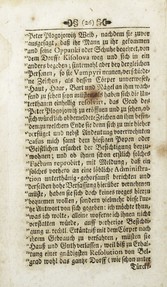 The Imperial Provisor was in a quandary. Fundamentally a civil servant, he was more used to obeying orders than making decisions.
The Imperial Provisor was in a quandary. Fundamentally a civil servant, he was more used to obeying orders than making decisions.
Moreover, it was Frombald's career on the line, if he allowed 'his' villagers to just leave. But if he permitted them to do as they asked - exhume the body and deal with the vampire - then his supervisors might question his fitness for the job. Talk of vampires was likely to be laughed out of the Viennese corridors of power.
Caught between local hysteria and distant rational disdain, Frombald mollified those close at hand. He accompanied the local priest and a party of local men to Peter Plogojowitz's graveside, and oversaw the exhumation.
To his shock, the corpse was not decayed. It looked plump and healthy. Though the dead man's pallor was a little white, some of his skin had peeled away to reveal a new pinkish growth of skin underneath. There was a trickle of blood dried at the corner of the dead man's mouth. His nails and beard had apparently grown in the grave. The former seemed to have regrown, in fact; as old fingernails lay discarded at the base of the coffin, while new ones appeared in their place.
Desperately shaken, he did not intervene when the furious Serbs drove a metal stake through Plogojowitz's chest. Frombald saw what appeared to be fresh blood pump from the wound, as well as from the body's nose, mouth and ears. The Kisilova villagers were not finished. They took the corpse and burnt it to ashes on a previously prepared pyre.
Frombald's official report seems to have been written in a state of some agitation. He detailed all that happened, all that he personally witnessed, then hoped that his actions would not be viewed as remiss. He took great pains to inform his Austrian superiors that none of this was his idea.
'I at first disapproved, telling them that the praiseworthy administration should first be dutifully and humbly informed, and its exalted opinion about this should be heard, they did not want to accommodate themselves to this at all.'
He did it in order to maintain the peace, as the 'rabble' were 'beside themselves with fear' and threatening to leave the fledgling Austrian colony.
Frombald needn't have worried. His superiors in Belgrade and Austria alike judged that he'd made the correct decision, and no further action was necessary.



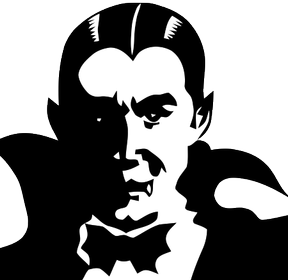 Kameralprovisor Frombald was evidently in a state of some disquiet. As an Austrian overseer, it was his job to ensure the smooth administration of his part of Serbia. But that plan hadn't factored in the locals.
Kameralprovisor Frombald was evidently in a state of some disquiet. As an Austrian overseer, it was his job to ensure the smooth administration of his part of Serbia. But that plan hadn't factored in the locals.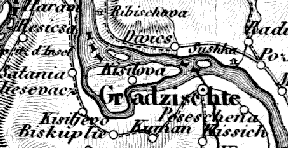 The Kisilova villagers already had their suspect. His name, in Serbian, was Петар Благојевић. It is usually Romanized as Peter Plogojowitz or Petar Blagojević. His wife had already fled.
The Kisilova villagers already had their suspect. His name, in Serbian, was Петар Благојевић. It is usually Romanized as Peter Plogojowitz or Petar Blagojević. His wife had already fled.


 The Imperial Provisor was in a quandary. Fundamentally a civil servant, he was more used to obeying orders than making decisions.
The Imperial Provisor was in a quandary. Fundamentally a civil servant, he was more used to obeying orders than making decisions. 


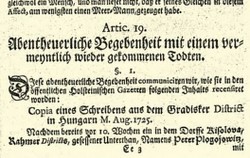

 St Tydecho's Churches in West Waleson 09/03/2014
St Tydecho's Churches in West Waleson 09/03/2014
 Goodies for an Outlander Premiere Partyon 03/06/2015
Goodies for an Outlander Premiere Partyon 03/06/2015
 Holocaust Memorial Day Interview with Rainer Höss, Grandson of Rudolf Architect of Auschwitzon 01/24/2015
Holocaust Memorial Day Interview with Rainer Höss, Grandson of Rudolf Architect of Auschwitzon 01/24/2015
 Romantic Valentine Gifts for an Outlander Fanon 01/16/2015
Romantic Valentine Gifts for an Outlander Fanon 01/16/2015

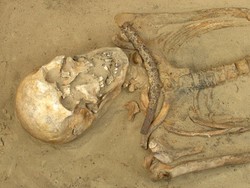

Comments
I'm glad that you enjoyed reading it.
Its nice.. thanku for sharing
You're very welcome. I'm really fascinated by where all of these stories came from. It's amazing to see how much of it is rooted in real histories.
I truly enjoyed reading this one. With Vampire stories running rampant, it is nice to know some of the history. Thanks for sharing.
You know, this is one case which actually has me stumped. Usually I can work out the reality by reading between the lines, but this one has foxed me.
Presuming he wasn't a vampire, what was going on here?
You're very welcome, and thank you for your kind words.
Thanks Jo. You have such a way if writting that really makes these stories come alive. Thank you